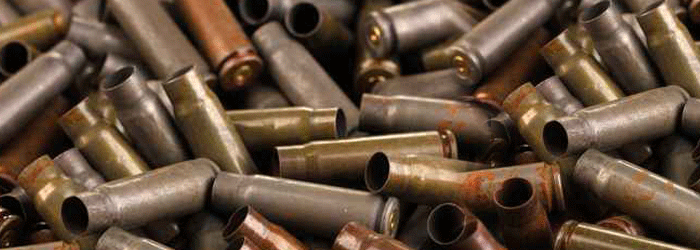Reloading brass inspection for damages and defects is critical to the reloading process. Ensuring that you have done proper reloading brass preparation – i.e. your brass is clean, soft and the correct size for reloading, as well as in good condition, should take up most of your time. Peregrine Bullets advises that inspecting reloading brass should be a continuous process.
We suggest that you inspect the brass during the following times
- Immediately after shooting the rifle – although the spent cartridges are likely to be dirty/soiled from having been fired, it is often easier to spot damage/cracks or other defects when in this condition.
- Once the brass has been tumbled and cleaned – although tumbling brass is not always considered a necessary prerequisite when doing reloading brass preparation, we at Peregrine Bullets suggest that this process be followed prior to reloading brass. This is due to the fact that the cleaning process will also afford you the opportunity to inspect the brass for any defects, and will ensure a high quality end product.
- Before reloading bullets – a final check should be done immediately before reloading your brass. This is to ensure that no problems were missed and no oversights made. When cleaning your primer pockets and resizing your brass, additional problems that may not have been immediately obvious, can be picked up during this process. It is therefor considered critical that the opportunity to inspect reloading brass be employed when following regular reloading procedure.
How to Inspect Reloading Brass For Different Types of brass damage
In addition to constantly checking brass for damages and defects, it is also important to keep the different kinds of damage to brass in mind. Generally speaking, damage of two types can occur:
- Damage as a result of general wear and tear is likely, particularly with older brass that has been used numerous times. It could also be that has hardened and become brittle due to repeated shocks to the metal. In addition, barrel pressures and pressures from heavy gunpowder loads can all add to damage to the brass.
- Damage and defects can also occur due to unnatural or unusual events pertaining to shots fired or the condition of the brass. These circumstances should, however, be easy to pick up on if the reloader is aware of what to look out for.
Recent Articles
How To Correctly Seat Peregrine Bullets
Seating the depth of hunting bullets ca [...]
How To Inspect Reloading Brass
Reloading brass inspection for damages [...]
How To Choose A Reloading Press
Reloading Press Purpose The purposes of [...]
How To Prepare Brass For Reloading
The Importance Of Caution When Prepar [...]





